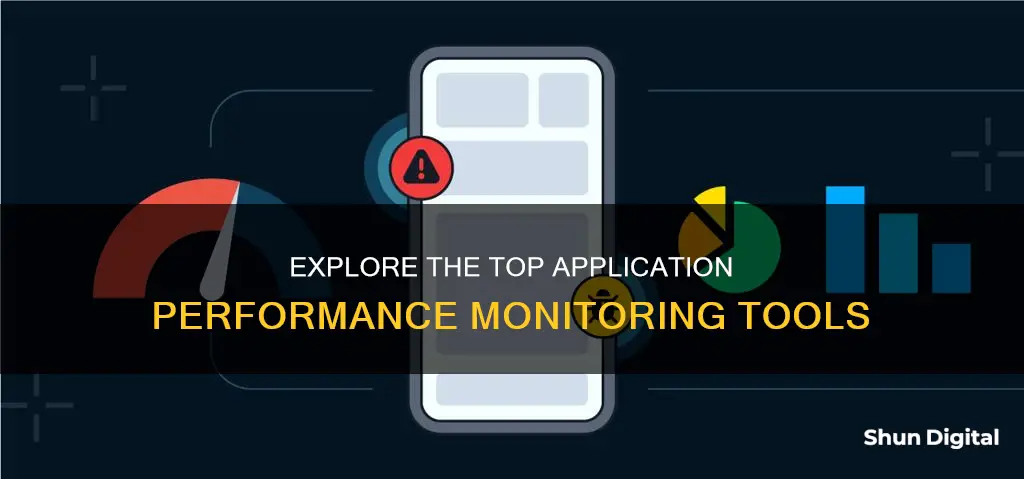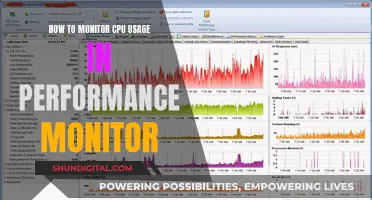
Application performance monitoring (APM) tools are software applications that help IT professionals monitor and manage the performance and availability of software applications. APM tools provide real-time monitoring and visibility into the performance of applications, enabling the quick identification of performance issues and their root causes. They are an integral part of ensuring that applications run smoothly, with minimal downtime, and that customers receive a positive experience.
APM tools offer a range of features, including full-stack performance monitoring, user experience monitoring and diagnostics, and the use of AI and advanced analytics for predictive analytics and automated problem resolution.
There are numerous APM tools available in the market, including AppDynamics, Datadog, Dynatrace, New Relic, and Instana, each with its own unique capabilities and strengths. These tools play a critical role in supporting the overall objectives of application development and driving business success.
| Characteristics | Values |
|---|---|
| Purpose | To ensure applications meet performance, reliability and user experience standards |
| Data Collected | CPU utilisation, memory demands, disk I/O speeds, application response times, error rates, transaction tracing, server/application instances, user requests, uptime |
| Benefits | Improved customer satisfaction, reduced operating costs, enhanced product development, better business collaboration |
| Use Cases | Real user monitoring, synthetic monitoring, agentless monitoring, user-defined transaction profiling, component monitoring, infrastructure monitoring |
| Integrations | Third-party tools and technologies, cloud services |
| Features | Full-stack performance monitoring, user experience monitoring, root cause analysis, AI and advanced analytics, alerting and notification capabilities, reporting and visualisation |
What You'll Learn

Real user monitoring
RUM data is used to determine the actual service-level quality delivered to end users and to detect errors or slowdowns on websites. It can also be used to test changes within the production environment or to anticipate behavioural changes in a website or application. As technology shifts to hybrid environments like cloud, fat clients, widgets, and apps, it becomes increasingly important to monitor the usage of applications from within the client itself.
RUM is typically "passive monitoring", meaning the RUM device collects web traffic without affecting the operation of the site. This is usually done by injecting a form of JavaScript into the page or native code within the application to provide feedback from the browser or client. This data is collected from various individuals and consolidated.
RUM can be helpful in identifying and troubleshooting last-mile issues. It differs from synthetic monitoring in that it relies on actual people clicking on the page to take measurements, rather than automated tests. Synthetic monitoring is useful for proactive simulation and testing of the expected user experience, and for collecting data about a specific metric at regular time intervals.
RUM collects data on a variety of metrics, including load actions, navigation start, request start, and speed index metrics. It can be used to collect data on each user action within a session, including the time required to complete the action, so patterns can be identified and improvements can be made.
Monitor Lizard Size: Understanding Their Massive Growth
You may want to see also

Business transactions
Business transaction monitoring involves tracking and optimising application transactions to ensure they operate optimally. This process provides insights into response times, threading, database calls, and complexity. By monitoring business transactions, organisations can answer critical questions such as revenue generation per application, conversion and bounce rates, and Service Level Agreement (SLA) compliance.
Dynatrace, a leading APM platform, utilises PurePath Technology® to capture timing and code-level context for every transaction. This enables tracking of each request across all tiers without gaps, providing a comprehensive view of application performance.
AppDynamics, another prominent APM solution, offers a range of features for monitoring business transactions. These include Automated Transaction Diagnostics, Transaction Thresholds, and a Transaction Scorecard, which summarises business transaction performance at the application, tier, or node level.
By leveraging these tools, organisations can effectively monitor and optimise their business transactions, ensuring applications meet desired performance standards and deliver a seamless user experience.
Ankle Monitors: Effective Surveillance or Easy to Cheat?
You may want to see also

Component monitoring
From a software or service perspective, this means monitoring the CPU, RAM, and hard drives. High usage can indicate an error with connected components, such as when a resource-intensive process is located on a server not designed for it. Storage I/O bottlenecks can occur when multiple users, applications, or services access the same storage location.
From a hardware and physical standpoint, errors with storage area networks can occur with physical connections to devices. Connection cabling, host bus adapters, and switches can fail, leading to outages.
SolarWinds' Server & Application Monitor (SAM) is an example of a component monitoring tool. It offers comprehensive monitoring for Microsoft Azure and AWS applications, systems, hypervisors, and IaaS, PaaS, and SaaS products, including container monitoring and API polling. SAM also includes predefined component monitors, comprised of code and scripts, that assess the status and performance of applications, services, processes, and events on nodes throughout the environment.
Another example is Datto RMM, which allows users to create custom component monitors using scripting languages such as PowerShell or Batch. These component monitors are scripts that regularly run on a device, and if they detect a specific condition is met, an alert is raised and sent to the relevant personnel.
Eliminating Monitor Interference: Simple Steps for a Clear Display
You may want to see also

Analytics and reporting
The ability to generate detailed reports is essential for effective communication with stakeholders. APM solutions allow users to customise reports to include specific performance metrics, ensuring that relevant information is conveyed clearly to stakeholders. This facilitates informed decision-making and enables stakeholders to grasp the overall health and performance of applications.
Additionally, APM tools empower IT teams to monitor applications across various environments, including on-premises, cloud-based, and hybrid deployments. This versatility ensures that teams can gain insights into application performance regardless of the underlying infrastructure.
Furthermore, advanced analytics capabilities within APM tools enable users to derive meaningful insights from performance data. By identifying correlations between different metrics and understanding the impact of performance issues on business outcomes, IT teams can make data-driven decisions to optimise application performance.
Artificial Intelligence (AI) and machine learning algorithms further enhance the analytics capabilities of APM tools. These technologies enable predictive analytics, allowing for the early identification of potential performance issues before they occur. AI also assists in automated root cause analysis, streamlining the troubleshooting process for IT teams.
In conclusion, analytics and reporting are vital aspects of APM solutions. By offering data visualisation, custom reporting, advanced analytics, and AI integration, these tools empower IT teams to make informed decisions, optimise application performance, and ultimately enhance the user experience.
Utilizing GPU Potential: Multiple Monitors, One GPU
You may want to see also

AI-based analytics
AI-based APM tools can automatically collect and analyse metrics such as response time, error rate and resource utilisation. They can also trace and profile the performance of individual requests and transactions, helping to identify slow or problematic code. This allows for the optimisation of specific requests or transactions.
AI-based tools can also be used to predict when performance issues may occur and take proactive measures to prevent them. For example, an online gaming company can use AI to predict when servers are likely to overload and increase server resource limits to accommodate the extra traffic.
AI-based APM systems can continuously collect data on metrics such as CPU usage, memory usage and network traffic. Using machine learning algorithms, the system can analyse this data and identify patterns that indicate normal performance. If an anomaly is detected, such as a sudden spike in CPU usage, the system can raise an alert and automatically suggest solutions.
AI can also be used for root cause analysis, where machine learning algorithms analyse large amounts of data to identify patterns that would be difficult to detect manually. AI-based models can analyse data from multiple sources, such as logs, metrics and traces, to identify the root cause of an issue. This is especially useful in complex environments where issues may span multiple components or systems.
AI-based APMs can also gather and analyse data on how customers interact with an application across different platforms, including web and mobile. This data can include user behaviour, clicks and engagement with the application. By analysing this data, AI-based APMs can identify patterns, problems and pain points that users are facing. For example, AI might provide insights into which pages or features are not used frequently or are abandoned quickly by users.
While AI-based APM offers many benefits, there are also some challenges to consider. These include data quality and completeness, model interpretability and explainability, privacy and data security, integration with existing systems, and high computational costs.
In conclusion, AI-based analytics enhances APM by providing automated performance monitoring, predictive analytics, and personalised user experiences. As AI and machine learning continue to advance, we can expect to see even more sophisticated and powerful AI-based APM solutions.
Blind Spot Monitoring: Is It Available on Toyota Camry?
You may want to see also







